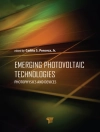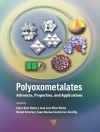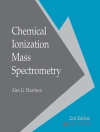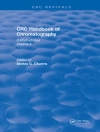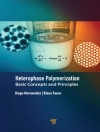Forensic archaeology is mostly defined as the use of archaeological methods and principles within a legal context. However, such a definition only covers one aspect of forensic archaeology and misses the full potential this discipline has to offer. This volume is unique in that it contains 57 chapters from experienced forensic archaeological practitioners working in different countries, intergovernmental organisations or NGO’s. It shows that the practice of forensic archaeology varies worldwide as a result of diverse historical, educational, legal and judicial backgrounds. The chapters in this volume will be an invaluable reference to (forensic) archaeologists, forensic anthropologists, humanitarian and human rights workers, forensic scientists, police officers, professionals working in criminal justice systems and all other individuals who are interested in the potential forensic archaeology has to offer at scenes of crime or places of incident. This volume promotes the development of forensic archaeology worldwide. In addition, it proposes an interpretative framework that is grounded in archaeological theory and methodology, integrating affiliated behavioural and forensic sciences.
Зміст
Biographies of editors ix
Biographies of contributors xi
Foreword by Clyde Collins Snow xxvii
Foreword by Jeremy Sarkin xxxv
Foreword by Colin Hope xli
Preface by W.J. Mike Groen xliii
Acknowledgments xlv
Glossary of abbreviations xlvii
Introduction li
W.J. Mike Groen Nicholas Márquez-Grant and Robert C. Janaway
Part 1 Europe
1 Forensic archaeology and anthropology in Austria 3
Fabian Kanz and Jan Cemper-Kiesslich
2 DVI Belgium: victim identification and necrosearch 9
Birgit Van Denhouwe and Eline M.J. Schotsmans
3 Bosnia and Herzegovina: forensic archaeology in support of national and international organisations undertaking criminal investigations and identifying the missing from 1996 to 2013 19
Ian Hanson Adnan Rizviç and Thomas J. Parsons
4 Forensic archaeology in Bulgaria – problems and perspectives 33
Ilian Boyanov
5 Croatia (Hrvatska): from WWII and the 1991 war to contemporary forensic cases 39
Mario Šlaus and Anja Petaros
6 Forensic archaeology in the Czech Republic 47
Petr Velemínský Miluše Dobisíková Eliška Maxová and Jana Velemínská
7 Forensic archaeology in Denmark 55
Marie Louise Jørkov and Niels Lynnerup
8 Forensic archaeology in the French context: the role of the Forensic Sciences Institute of the French National Gendarmerie 59
Yves Schuliar Patrice Georges Florent Ducrettet Franck Nolot and Jean Richebé
9 The Working Group ‘Forensic Archaeology’ at the German Bundeskriminalamt 67
Ralf Neumann Karsten Klenke and Andrea Fischer
10 Forensic archaeology in Greece 77
Konstantinos Moraitis and Constantine Eliopoulos
11 Forensic archaeology and anthropology in Hungary: current trends and future perspectives 83
Éva Susa Kinga Éry László Kovács Mátyás Szo″ke and Mária Molnos
12 Forensic archaeology in Italy: the difficult birth of a discipline 91
Matteo Borrini
13 Forensic archaeology in Lithuania 99
Rimantas Jankauskas
14 Forensic archaeology in the Netherlands: uncovering buried and scattered evidence 109
Roosje de Leeuwe and W.J. Mike Groen
15 Forensic archaeology in Poland: theory and practice 121
Maciej Trzciniski and Tomasz Borkowski
16 Forensic archaeology in Romania: present and future of a new discipline 129
Annamaria Diana
17 Forensic archaeology in the Russian Federation 139
Alexey Abramov Elizaveta Veselovskaya Alexey Dolgov Asya V. Engovatova Maria B. Mednikova Sergey Nikitin and Azrat Safarov
18 Forensic archaeology in Serbia: from exhumation to excavation 149
Marija Djuric iand Andrej Starovic i
19 Forensic archaeology in the Slovak Republic 159
Soňa Masnicová Radoslav Beňuš and Zuzana Obertová
20 Inclusion of archaeology in criminal investigations – Slovenia 165
Pavel Jamnik
21 The use of archaeology in the criminal and medico-legal context in Spain 173
Nicholas Márquez-Grant Miguel Ángel Vázquez Díaz and Raquel Meléndez González
22 Forensic archaeology and anthropology in Switzerland 183
Sandra Lösch Christian Jackowski and Christian Zingg
23 Introduction to forensic archaeology in the United Kingdom 189
John Hunter and Cecily Cropper
24 Forensic archaeology in the United Kingdom and quality assurance 197
Robert C. Janaway
25 Forensic archaeology: the European collaboration 207
W.J. Mike Groen
Part 2 The Americas
26 Forensic archaeology and anthropology in Brazil 215
Marco Aurelio Guimarães Raffaela Arrabaça Francisco Rafael de Abreu e Souza and Martin Paul Evison
27 Canadian forensic archaeology: a Mari Usque ad Mare ad hoc 223
Derek Congram
28 A brief account of the past and present circumstances of forensic archaeology in Costa Rica 231
Roxana Ferllini
29 Forensic archaeology in Mexico: the intermittent and unfinished application of the forensic archaeological techniques and methods 239
Carlos Jácome Hernández and Lilia Escorcia Hernández
30 Forensic scientific practice in Panama 247
Ann H. Ross and José Vicente Pachar Lucio
31 Forensic archaeology in the United States 255
Luis L. Cabo and Dennis C. Dirkmaat
32 Forensic archaeology and the recovery of human remains in Venezuela 271
Livia Margarita Muñoz Andrade
Part 3 Africa Asia and Oceania
33 The use of (forensic) archaeology in Australia in the search and recovery of buried evidence: a review 279
Soren Blau and Jon Sterenberg
34 Forensic archaeology: an Indian perspective 287
Anil Aggrawal
35 Forensic archaeology in Lebanon 293
Lynn Maalouf and Rita Clovis Maalouf
36 Forensic sciences in Libya and mass grave investigation 301
Amin Attia Alemam
37 Forensic archaeology in Nepal 309
Susan Appleyard
38 The current status of forensic archaeology in New Zealand 319
Edward Ashby and Beatrice Hudson
39 The archaeological investigation of crime scenes and humanitarian cases that involve graves and human remains in South Africa 327
W. Coen Nienaber
40 Anthropology module of Mass ID Manager (MIM) in the Republic of Korea: potential for forensic archaeology 337
Nak-Eun Chung Yi-Suk Kim and U-Young Lee
41 Forensic archaeology: an introduction from the United Arab Emirates 349
Khudooma Saeed Al Naimi
42 The heroic and the hidden dead: Zimbabwe and exhumations 359
Shari Eppel
Part 4 (Non-) Governmental Organisations
43 Forensic archaeology: the Argentinian way 369
Luis Fondebrider and Vivian Scheinsohn
44 Forensic archaeology and the Australian war dead 379
Denise Donlon Anthony Lowe and Brian Manns
45 Forensic archaeology in Chile: the contribution of the Chilean state to our memory truth and justice 389
Marisol Intriago Leiva Joyce Stockins Ramírez and Claudia Garrido Varas
46 The role of forensic archaeology in revealing the truth of Colombia’s armed conflict: a critical perspective 399
Ana Carolina Guatame García Carolina Puerto Valdivieso and Eileen Buitrago Pérez
47 Forensic archaeology and the independent commission for the location of victims’ remains 407
Niamh A. Mc Cullagh and Geoffrey C. Knupfer
48 Forensic archaeology and the International Commission on Missing Persons: setting standards in an integrated process 415
Ian Hanson
49 Forensic archaeology in humanitarian contexts; ICRC action and recommendations 427
Morris V. Tidball-Binz and Ute Hofmeister
50 The Inforce Foundation 439
Roland Wessling
51 Forensic archaeology underwater: JPAC’s inventory investigation and recovery of US casualties of war from submerged sites 453
Andrew T. Pietruszka
52 Forensic archaeology in Peru: between science and human rights activism 463
José Pablo Baraybar and Franco Mora
53 Physicians for human rights: the role of forensic archaeology in transitional justice contexts 471
Stefan Schmitt Amanda Sozer Gillian Fowler and Dallas Mazoori
54 Recovering memories of the Portuguese Colonial War through forensic anthropology 479
Eugénia Cunha Maria Teresa Ferreira Sónia Codinha Gonçalo Carnim Carina Marques and Cláudia Umbelino
55 Contemporary exhumations in Spain: recovering the missing from the Spanish Civil War 489
Francisco Etxeberria Lourdes Herrasti Fernando Serrulla and Nicholas Márquez-Grant
56 The development of forensic archaeology and anthropology by the Uruguayan Forensic Anthropology Team 499
José M. López Mazz and Alicia Lusiardo
57 The Returning Casualty: the excavation of a communist re-education camp cemetery at Lang Da Yen Bai Province Vietnam 507
Julie Martin
Part 5 Concluding Remarks
Concluding remarks 517
W.J. Mike Groen Nicholas Márquez-Grant and Robert C. Janaway
Index 537
Про автора
Mike Groen is a Forensic Archaeologist at the Netherlands Forensic Institute (NFI), the Netherlands, and lectures in Forensic Archaeology, Human Osteo Archaeology and Taphonomy at several Dutch universities. He is currently (2015) Chair of the Forensic Archaeology Project Group within the European Network of Forensic Science Institutes (ENFSI).Nicholas Márquez-Grant is Course Director in Forensic Archaeology and Anthropology at Cranfield Forensic Institute, Cranfield University, UK. He is also a Research Fellow at the School of Anthropology and Museum Ethnography, University of Oxford, UK. As a forensic practitioner, he has acted as an expert witness in Forensic Anthropology and Archaeology.Robert Janaway is a Lecturer in Forensic and Archaeological Sciences and Course Director for Forensic Archaeology and Crime Scene Investigation at Bradford University, UK. He has acted as a forensic archaeologist and has conducted research in forensic taphonomy for over 25 years and is currently (2015) Chair of the Chartered Institute for Archaeologists (CIf A) Forensic Archaeology Expert Panel.


